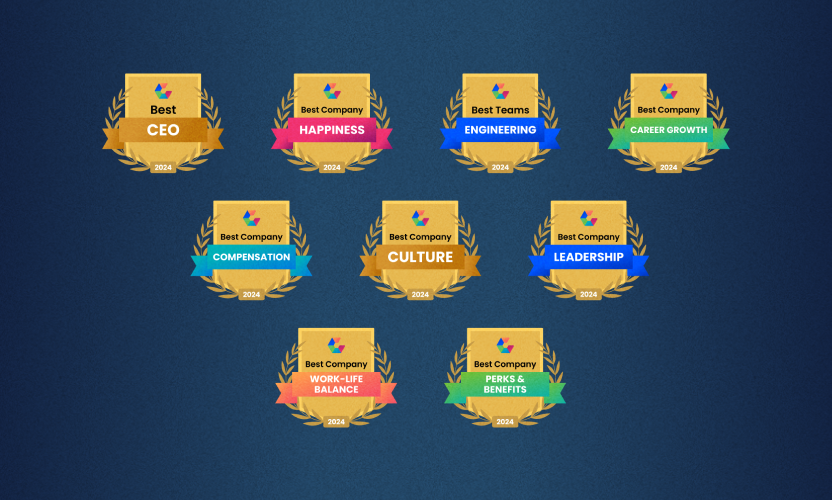
Steps MSPs Should Take When Selecting a Vendor Partner
The cloud has changed how we work and collaborate with our colleagues, partners and customers. As a result, cloud-based services seem to have quadrupled in recent years – it seems as if you can’t step outside without stepping on one, figuratively speaking. For service providers trying to wade through this crowded pool of vendors, it can be challenging to know how to select the vendors who can deliver the best combination of services for their clients.

I’ve worked with numerous channel partners for more than 14 years and have had some very candid conversations about what MSPs really need for their business vs. what they need for their customers. It isn’t about the most shiny object (the “hot company of the hour”); it’s about ensuring that the vendor an MSP chooses fits these five benefit categories in order to ensure success for both the MSP AND its customer base.
#1: DO MY CUSTOMERS NEED IT?
Does the vendor’s offering make sense for your clients, and does it match your customers’ business needs? Each vendor should add value to your client’s business; if it doesn’t, then that vendor should be scratched off the list. For example, if you own or lease a data center to house your client’s data, you’ve probably partnered with vendors, such as Egnyte, who cloud-enable your infrastructure investments in order to enable customers to easily share and sync their data. In addition, you’re probably managing access via Active Directory or perhaps one of the single sign-on (SSO) vendors, such as Okta. Obviously, there are many pieces to consider for this data center example, but ultimately, you need to determine what’s missing in your portfolio and choose offerings that can fill the gaps to best meet your customers’ needs.
#2: DOES THE SERVICE ENHANCE MY BUSINESS?
There are, of course, “meat and potatoes” products that you just have to provide for your customers. But, once in a while, a solution category will come along that will not only address an existing need for your customers but will also introduce opportunities that can address other areas of their businesses. These types of solutions represent a “wedge” that can open doors into new recurring revenue opportunities and enhance your portfolio offerings to make you an ideal technology partner for new and existing customers. Keep your eyes open for these “wedges” and even ask your prospective vendors if they view themselves in this way.
#3: IS THE VENDOR EASY TO DO BUSINESS WITH?
Select a vendor who makes your life easier, not more complicated. Do they have an official on-boarding process to ensure a successful launch? Do they have enablement tools to help you and your staff understand the solution? Do they have proven category experience to help you effectively take the solution to market? The more help they can provide you and your customers upfront, the easier it will be to get it deployed for your customers, and bluntly – enable you to start making more money faster.
#4: IS IT ADAPTABLE?
To get the most “bang” for your buck and other investments, look for vendors that can prove flexibility in their solutions. This way, you won’t continually run into customer requirements that you can’t address. Also, you probably have clients of all sizes, and those businesses will most likely grow. As your clients grow, so do your investments, so it’s essential for MSPs to work with vendor partners who can account for this type of growth and scale up and down as needed. There’s nothing worse than having a bundle of products where one “weak link” product can’t scale and adapt with the rest of your investments.
#5: CAN I MAKE MONEY?
MSPs serve as a customer’s trusted technology advisor and, in many cases, make their money on the services surrounding a particular product. And thanks to the SaaS licensing model associated with the cloud, it’s easy to bundle licenses into an overall service package. So it’s important to select a vendor who integrates well with other offerings, such as on-premises storage, security solutions, etc., and provides the highest revenue opportunity for the service provider.
The above list is obviously not exhaustive, but it offers a good way to gut check whether you’re partnering with the right vendors who will enhance your product portfolio and provide real benefits for your clients. At the end of the day, you want to provide a great service for your clients AND make money for a sustainable and growing business.
Mort Jensen, who received the CRN 2014 Channel Chief award, is responsible for Egnyte’s service provider channel. His 18-year background includes deep experience in the channel and cloud technologies. Prior to Egnyte, he held channel leadership positions with Meraki (acquired by Cisco), Good Technology (acquired by Motorola) and 4INFO among others. Mort has a BS in engineering from Cal Poly, San Luis Obispo. You can follow him on Twitter at @mortjensen or LinkedIn at www.linkedin.com/in/mortjensen/. The original post appeared in MSP Alliance.





